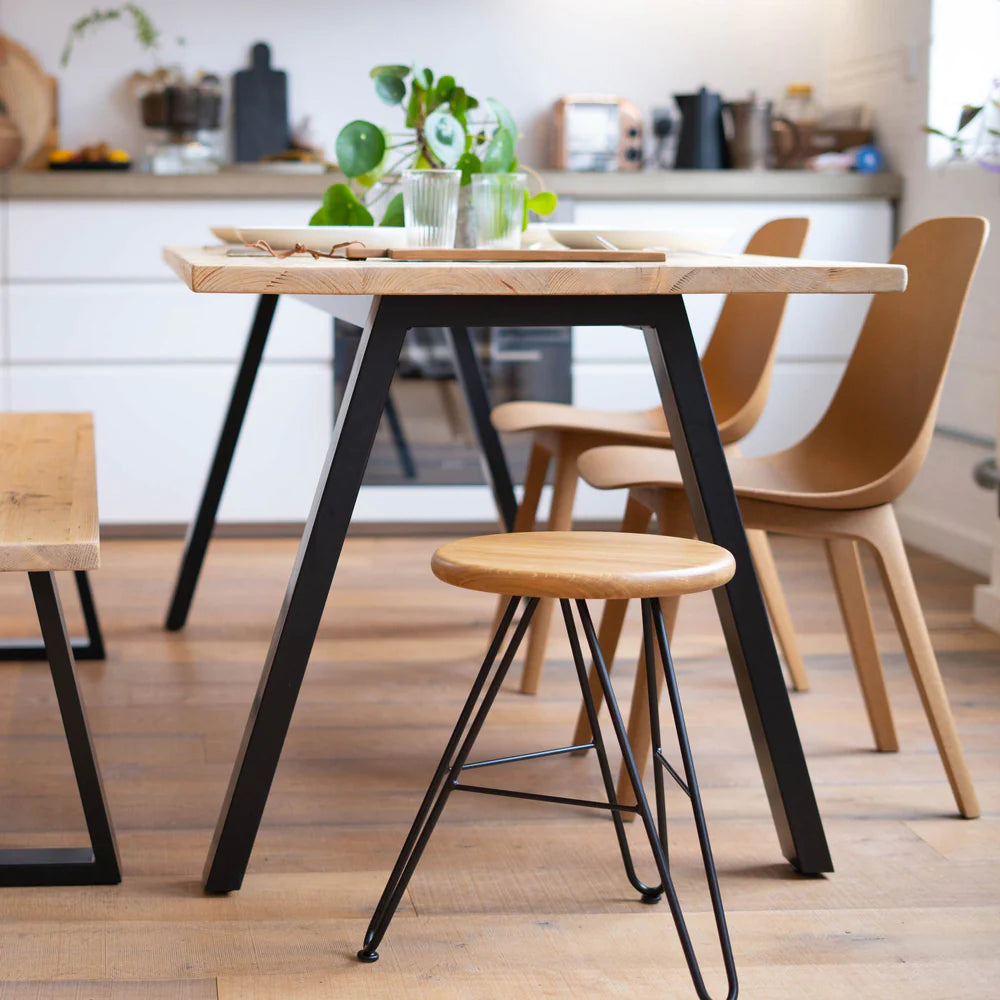Dining Room Table Legs: What to Think about Prior To You Purchase
Dining Room Table Legs: What to Think about Prior To You Purchase
Blog Article
An In-depth Look at Dining Table Leg Styles: Discovering the Ideal Match
Picking the right dining table leg style is crucial for both visual appeal and sensible performance. For those with larger tables, trestle legs ensure durable support, whereas barrette legs introduce a mid-century contemporary ambiance with their minimalist layout. The x-shaped legs mix modern style with improved security.
Standard 4 Legs
Among the different kinds of table leg designs, the conventional four-leg style continues to be a timeless selection for numerous homes. This timeless arrangement supplies a harmonious mix of capability and aesthetic appeals, making it a seasonal favorite. Four legs supply balanced support, making certain the table continues to be secure and efficient in birthing considerable weight. This is particularly beneficial for families that regularly organize huge celebrations or utilize their dining table for several objectives, such as job or crafting.
From a visual point of view, the conventional four-leg style can be quickly adapted to various interior styles. Whether crafted from timber, steel, or a combination of materials, these legs can be elaborately carved, sleek and minimalistic, or anything in between. Their convenience permits them to enhance both rustic and modern settings effortlessly.
Furthermore, the uncomplicated framework of the four-leg layout facilitates convenience of activity and positioning within a space. Unlike more complex bases, this design minimizes obstructions, providing sufficient legroom for restaurants. In recap, the traditional four-leg table leg design weds enduring elegance with functional capability, making it a sharp choice for those seeking both form and feature in their dining furniture.
Stand Base
Typically celebrated for its elegant and space-efficient design, the stand base is a notable option to the typical four-leg arrangement in dining table leg designs. This unique base commonly includes a solitary central column sustaining the table top, which can vary in type, from ornately carved wood to streamlined, contemporary metal. Among the main advantages of the stand base is its capacity to take full advantage of legroom and seating adaptability. Without edge legs, diners are paid for greater liberty of movement, making it a suitable option for round and oval tables that advertise even more intimate and comprehensive events.
The main column itself offers a canvas for complex layouts and artistic expressions, including an element of aesthetic interest beneath the table. In summary, the pedestal base integrates capability with design, making it an improved and sensible alternative for diverse eating settings.
Trestle Legs
Trestle legs supply a robust and classic structure for eating tables, identified by their horizontal cross-bracing and durable support beam of lights. Originating from medieval times, this style has progressed yet kept its essential structure, making it a perennial favorite in both conventional and modern settings. The main trestle beam, typically supported by two or even more vertical blog posts, offers exceptional stability, allowing for larger table sizes without the demand for added legs.
A substantial advantage of trestle leg tables is the adequate legroom they provide. Unlike tables with four edge legs, the lack of blockages at the table's edges gives unimpeded room for chairs and restaurants, enhancing comfort and availability. This makes trestle tables excellent for suiting bigger celebrations, whether in a dining space or a reception hall.
The aesthetic convenience of trestle legs is noteworthy. Readily available in a range of products such as timber, metal, and composite, they can be ended up to match a wide variety of interior styles. From rustic farmhouse to streamlined modern-day designs, trestle legs can be tailored to match individual tastes. Their long-lasting charm and useful Full Report advantages make trestle legs a compelling option for those looking for both style and functionality in their dining table.
Hairpin Legs

The allure of hairpin legs depends on their simplicity and convenience - dining room table legs. Offered in a series of products, consisting of steel and brass, they can be ended up in numerous shades to complement different interior designs. Whether coupled with a rustic wood table top or a contemporary glass surface, hairpin legs easily blend functionality with a touch of classic appeal
Longevity is an additional significant function of barrette legs. In spite of their delicate look, these legs are crafted to bear significant weight, ensuring the table remains steady and secure. Additionally, they are read this article fairly simple to mount, making them a popular choice for DIY enthusiasts and professional furniture makers alike.
X-Shaped Legs

Constructed from products such as steel, timber, or a mix of Recommended Reading both, X-shaped legs can be customized to match different layout preferences. Steel legs usually offer a streamlined and commercial feeling, ideal for loft-style apartments and modern eating rooms. On the various other hand, wooden X-shaped legs use a warmer, more rustic appeal, appropriate for farmhouse or diverse insides. The adaptability in materials permits house owners to tailor their dining tables to much better fit their general style system.
In addition, the design behind X-shaped legs guarantees also weight circulation, minimizing the threat of tottering and enhancing toughness. This makes them specifically fit for larger dining tables that call for additional support. Fundamentally, X-shaped legs mix practical engineering with modern appearances, making them a classic selection for diverse eating atmospheres.
Final Thought
A comprehensive understanding of eating table leg designs reveals the unique attributes and advantages of each layout. Typical four legs supply stability and timeless appeal, while pedestal bases give legroom and a structured appearance. Trestle legs guarantee durable support for larger tables, and hairpin legs introduce a mid-century modern aesthetic. X-shaped legs combine contemporary design with improved security. Choosing the appropriate leg design guarantees both practical and aesthetic contentment in any dining room.
Report this page